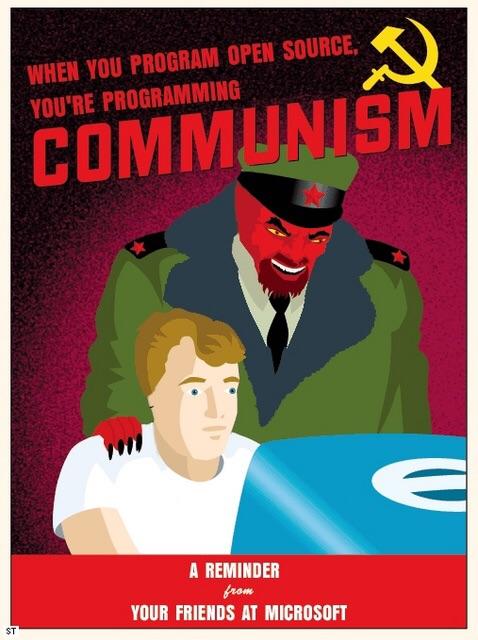It doesn’t help that they keep deprecating and changing standard stuff every other version. It’s like they can’t make up their mind and everything may be subject to change. Updating to the most recent release can suddenly cause 10s or 100s of compiler warnings/errors and things may no longer behave the same. Then you look up the new documentation and realize that you have to refactor a large part of the codebase because the “new way” is for whatever reason vastly different.
(_____(_____________(#)~~~~~~
- 1 Post
- 28 Comments

 10·14 days ago
10·14 days agoThis shit is exactly why I’ve been firmly avoiding anything “smart”. If I can’t run an OS/firmware on it that I compiled myself and have full control I don’t trust it.

 1·25 days ago
1·25 days agoOn distros w/o systemd there is always syslog-ng. s6 also has its own log system.

 4·26 days ago
4·26 days agoIt’s not necessary, but a good thing to have if something goes wrong and you want to debug/monitor something. It’s really up to you and your needs.
 3·1 month ago
3·1 month agoIt’s capitalism. Nobody wants to take risks anymore because game development is a huge industry now with many investors who demand their developers play it safe and make sure it has mass appeal. Then even the indies (those who view game dev primarily as a business) see that what the big guys are doing “works” so now they strive to do the same because otherwise there would be no way for them to stay competitive. Only game devs who view making games as a fun thing to do and don’t even really think about the industry or the current market can make good games. Which are a small minority at this point, because capitalism favors the former.
 2·1 month ago
2·1 month agoI feel the same. I only play very few games anymore for this reason. Most of the games I play are very niche because they at least try to be unique. Like Fates of Ort or Dust Riser for example. I also tend to play a lot of open source re-implementations like OpenRCT2, OpenMW or Augustus (Caesar III).
Game stores are flooded with crap that tries to appeal to the widest possible audience, which makes it really difficult to find actually good games. Even most Indies only produce slop. Nintendo used to make really interesting games back in the day. Still have my GameBoy and 3DS with some of my favorite games, so at least I can still enjoy those.

 3·2 months ago
3·2 months agoFinally they can go where their Itanium shit already lies.

 3·2 months ago
3·2 months agoGood point, I didn’t think of that! Either way, I’m quite happy to see more general purpose RISCs emerge. At this point I’m just really sick of dealing with Intel’s CISC crap lol.

 4·2 months ago
4·2 months agoThere are chinese companies making RISC-V chips and machines: https://milkv.io/pioneer
I get the impression that LoongArch has more priority because they fully own that ISA which means foreign entities such as the US Empire can have 0 impact on it. If something happens to RISC-V that could put China at a disadvantage they still have LoongArch. If they go all in on RISC-V they could easily get fucked or bullied into submission, that’s my view anyways.

 3·2 months ago
3·2 months agoThere are some boards on AliExpress but they’re all the older ones. I would not buy one right now though they’re a bit expensive for what they are. I’d wait for at least another year.

 4·2 months ago
4·2 months agoBecause they can’t take the thought that a bunch of godless commies might be surpassing them.

 3·2 months ago
3·2 months agoI have a similar theory. All “AIs” used right now are really just giant matrices that you multiply vectors against. It’s the same concept that’s used in computer graphics all the time, that’s why GPUs are so good for training and running them. To me a more “real” intelligence would need to grow and develop on its own completely organically without any human input and not be just a math problem. It would have to be dynamic and fluid much like a real brain. Neurons would need to function more like individual entities and behave like real neurons rather than just items in an array that get used in simple floating point operations. If you can express any core part of an “AI” as a simple function it’s not really an AI.
Note that I’m not an expert, I just spent a some years experimenting with different types and combinations of conventional Neural Networks, reading research papers and eventually came to the conclusion that they’re a dead end due to their static nature. This realization actually made me lose interest in “AI” because these things are really just “smart” input mappers that can take well educated “guesses” of what the output might be.

 6·3 months ago
6·3 months agoKeep in mind gcc even supports the still undocumented instructions (at least in the english world) such as the vector instructions for 128 and 256-bit vector registers. That’s probably because people at Loongson were responsible for the implementation. They also maintain their own soft-forked Linux kernel and their patches eventually make it into mainline. Their soft-fork is more bleeding edge though I guess.

 6·3 months ago
6·3 months agoThey have published documentation of the ISA in english though it’s not complete: https://loongson.github.io/LoongArch-Documentation/README-EN.html
gcc and qemu already support la64 so cross compiling and basic testing is already possible for anyone.

 7·3 months ago
7·3 months agoIt’s not like you have any choice other than GNU/Linux if you get a LoongArch based computer lol. I don’t think Apple will ever give a shit and Microsoft currently only has an ARM port of Windows which mostly works on some aarch64 boards. It’s obviously a move to make themselves more independent of western closed source garbage.
You don’t need bleeding edge hardware to do email, spreadsheets, and document editing.
emacs ftw.

 2·4 months ago
2·4 months agoGallium-Nine also tends to be buggy if used with 32-bit software in particular. All the 32-bit games I’ve tried have problems with it. They usually work fine for the first 30-60 minutes and after that the framerate becomes unstable to the point where the game becomes unplayable. It happens consistently with Gallium-nine but not at all with DXVK.

 6·6 months ago
6·6 months agoWestmere Xeon processors are still quite OK imo. I have an old enterprise machine with one. 12 Threads, 2.6 GHz is still quite usable for many things. I mostly use it to compile larger software. But personally I’d argue that Longsoon is already far better than Intel/AMD since Longsoon is based on MIPS, which is based on RISC, while Intel/AMD still clings to their bloated and way too power hungry CISC crap. Plus today most performance comes from parallelism and cache size rather than core frequency and Longsoon does already have 128 and 256-bit vector instructions in their ISA, which is pretty decent. Maybe they can figure out a 512-bit vector extension that doesn’t severely throttle the CPU when using it before Intel can, lol.

 234·6 months ago
234·6 months ago US Imperials about to seethe
US Imperials about to seethe


At this point the best thing that could happen to the PS5 is for people to find a reliable jailbreak. With Linux it would probably make a decent PC. In terms of specs the hardware is comparable to a Xeon based workstation from the early-mid 2010s.